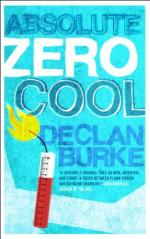|
This section contains 795 words (approx. 3 pages at 300 words per page) |

|
Low-temperature physics studies the behavior of matter at temperatures approaching absolute zero (-273.15°C) with the use of experimental cryogenic methods. At such extremely cold temperatures, the optical, thermal, electric, and magnetic properties of materials undergo significant changes compared to those properties at warmer temperatures. Two classic examples of these changes are superconductivity and superfluidity. Major advances in low-temperature physics were made during the early twentieth century. Superconductivity was discovered in 1911 by Dutch physicist H. K. Onnes, who spent his scientific career developing cryogenic methods and investigating the properties of very cold materials. In 1908, he succeeded in liquefying helium by cooling it to -269°C (4K), thus providing experimentalists with the possibility to work at previously unreachable temperatures. By immersing samples in liquid helium with the use of cryostats or refrigerating units, physicists were able to cool other materials to temperatures approaching absolute zero...
|
This section contains 795 words (approx. 3 pages at 300 words per page) |

|


